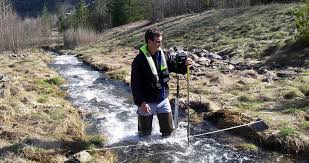This field trip involves the construction of a simple structural and lithological map of the shore platform below Black Cliff, Hallett Cove. The map should show the trends of rock layering and their relationship to structural features such as folds, the location of structural measurements taken using a compass/clinometer (e.g. bedding, cleavage, joints, lineations, etc.), and a variety of sedimentary features that indicate younging directions and changes in depositional environment.
ENR120 Engineering & Environmental Geology Assignment-South Australia University

ASSESSMENT ITEM 1: GEOLOGICAL MAP
Refer to Lecture Geological maps and cross-sections and Practicals (Week 6 and 7) to help you construct your geological map. These documents discuss all the features your map should contain, including some suggested symbols for bedding, cleavage, etc. They also demonstrate how to represent different rock formations and structural features such as folds and faults.
Your map should contain 3 major rock units in total, along with a variety of soil/regolith units that constitute recent unconsolidated deposits (e.g. beach sand, cliff talus, river gravel etc.). These should be organised by RELATIVE AGE in a stratigraphic column. Your map should also contain symbols for trend lines, fold structures and unconformities that are summarised in a legend. All measurements for bedding, cleavage and joints should be plotted using appropriate symbols. DO NOT just list location numbers – you should plot readings as you go in the field. Check with your instructor to ensure you are doing this right, otherwise your map will contain a lot of errors and it will be difficult to complete your stereonets.
ENR120 Engineering & Environmental Geology Assignment-South Australia University

In addition to your map, you should hand up a list of bedding, cleavage and joint measurements that you took in the field in a spreadsheet. Use different columns to differentiate between each type of measurement (i.e. one column for bedding, one for cleavage, one for joints). On this list, also indicate your group members and your instructor – this means you will probably need to learn some names by the end of your session!
ASSESSMENT ITEM 2: STEREONETS
Refer to Lecture 6B and Practical 7 (Week 7) to help you construct your stereonets. Two overlays will be distributed to each student during the field trip. You will need to plot measurements taken using your compass/clinometer on these sheets. Be sure to understand the difference between dip/strike and dip/dip direction – you may need to convert between these formats before you can start plotting up!
- One sheet should contain bedding and cleavage data plotted as great circles. Label each great circle with the full measurement you used to plot it up (e.g. 20/250). Use different lines to differentiate bedding readings from cleavage readings.
- The other sheet should contain bedding data only plotted as poles.
- You will then need to calculate a fold axis and state its value (e.g. 36 → 165) using the two methods we rehearsed in Practical 10. Make sure the fold axis is labelled on both stereonet sheets. A fold profile plane (best-fit great circle) will also need to be labelled on the sheet containing poles.
The reading included in the EEG Week 6/7 Activities and Resources – Practical 6 will help you with this exercise if you get stuck. Be sure to take sufficient measurements while at Hallett Cove, otherwise your stereonets (and map) will look very sparse, and you may have difficulty calculating fold axes accurately. Stereonets may be submitted either in pencil or black ink. They must contain your name and student ID, along with an appropriate title. The title must indicate what is plotted on each stereonet (e.g. ‘Great circles of bedding and cleavage in shale’; ‘Poles to bedding in shale’).
ENR120 Engineering & Environmental Geology Assignment-South Australia University

ASSESSMENT ITEM 3: PHOTO AND SKETCH
Your submission must include a photograph AND sketch of some important field relationships at Hallett Cove. You must identify bedding, cleavage and joint planes in a single outcrop and include them in ONE PHOTOGRAPH. Alongside the photograph, you should present a sketch or line drawing that highlights these features and provides appropriate labels to indicate your observations – describe how you identified each feature in the field (e.g. how did you distinguish cleavage from bedding?). All annotations should be sufficiently detailed and include relevant technical terms discussed in the lectures and practicals. Remember to indicate scale and orientation on all illustrations. This means (a) indicating whether you were facing north, south, southwest, etc. when the photograph was taken; and (b) quantifying a feature in the photograph (e.g. pen is 10 cm; coin diameter is 3 cm).



